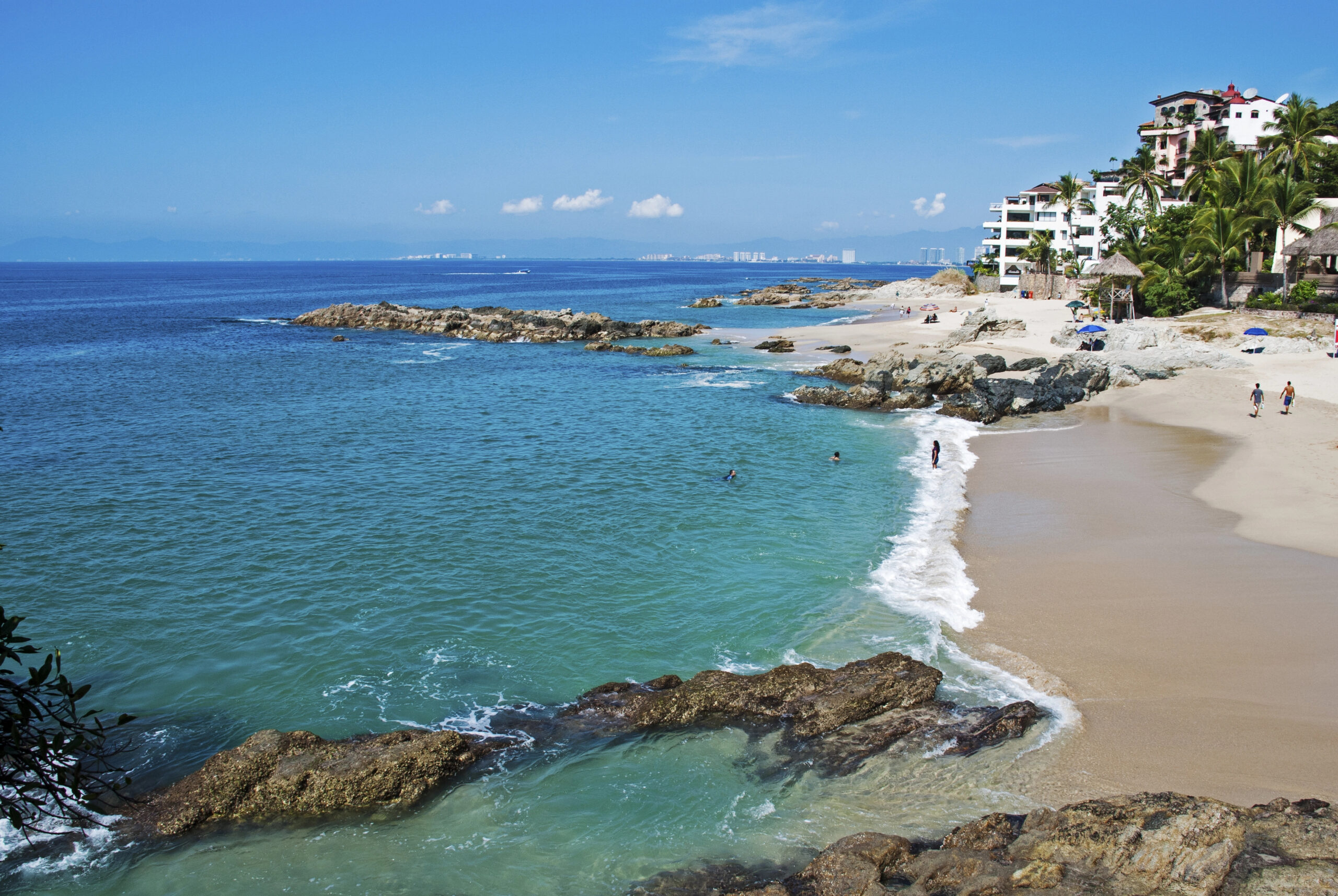Maybe you’ve sailed the Eastern Caribbean twice, checked off the Western route, and even ventured south to Aruba. Now you’re scanning cruise listings, wondering what’s next, or perhaps the Caribbean just doesn’t quite fit this time around. Flights to Florida are pricey, seven-night itineraries don’t match your schedule, or you simply want something different without giving up warm weather, turquoise water, and easy beach days.
After sailing dozens of cruises, I’ve learned that the Caribbean doesn’t hold a monopoly on warm weather cruises with family-friendly ports. Several destinations deliver that same tropical vacation feel of warm weather, beach days, water sports, but they’re technically not in the Caribbean Sea at all. Some, like the Bahamas, overlap so much with traditional Caribbean itineraries that cruise lines often lump them together. Others, like Bermuda and the Mexican Riviera, offer completely distinct experiences while checking all the warm-weather boxes.
In this guide, we’ll explore four warm-weather cruise regions that deliver the Caribbean experience without being in the Caribbean Sea: the Bahamas, Bermuda, the Mexican Riviera, and the Panama Canal. You’ll discover what makes each one unique, which ports deliver standout family experiences, and when these alternatives make more sense than booking another Caribbean sailing. By the end, you’ll have a clearer picture of your warm-weather cruise options and where your next sunny escape might begin.
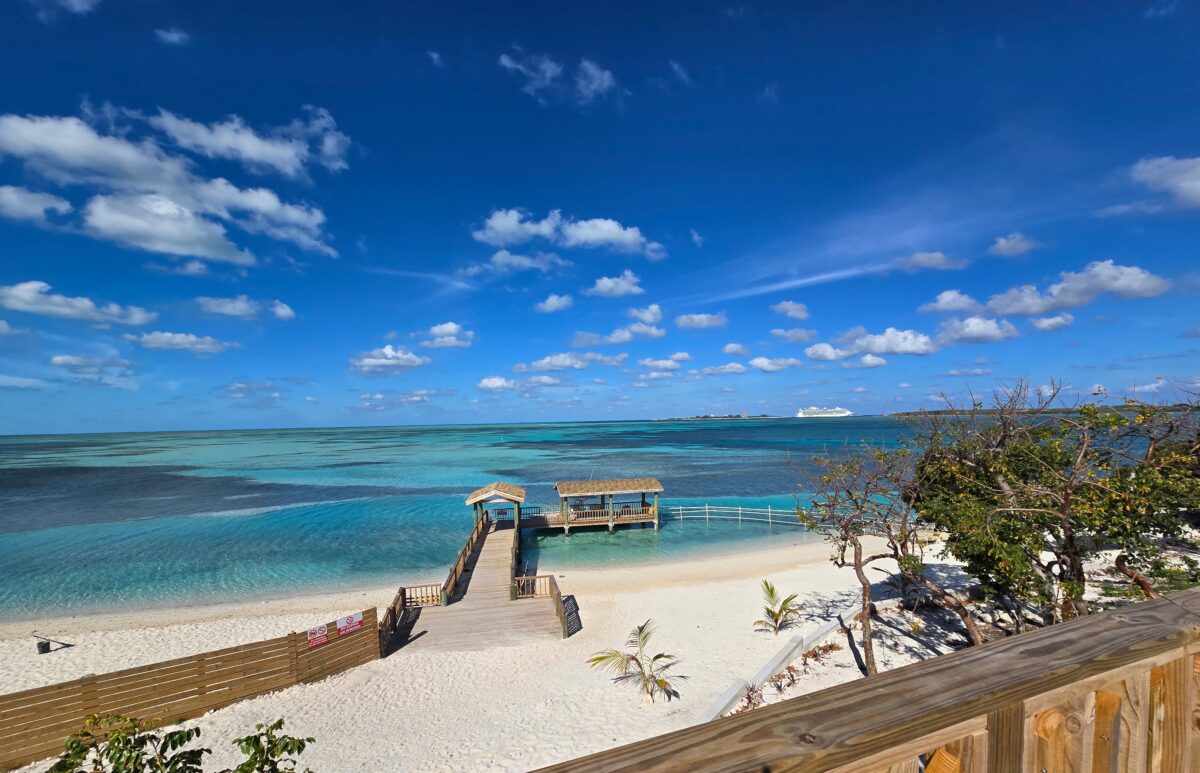
What Makes These Destinations Different from the Caribbean?
When I talk about warm-weather cruise destinations beyond the Caribbean, I mean places that deliver a similar vacation experience, such as warm weather, beaches, water activities, and family-friendly ports, but sit outside the Caribbean Sea itself. The Bahamas sprawl across the Atlantic just north of Cuba. Bermuda floats 700 miles off the Carolina coast. The Mexican Riviera hugs the Pacific side of Mexico. And Panama Canal cruises thread through Central America, connecting two oceans while stopping at tropical ports along the way.
These destinations share key characteristics with traditional Caribbean cruises:
Warm-weather focus: Year-round sunshine (or at least a solid warm-weather season) and temperatures that make beach days possible.
Beach and water activities: Snorkeling, swimming, beach clubs, and water sports dominate the shore excursion lineup.
Cruise-friendly ports: Established infrastructure, easy navigation, and plenty of family-friendly options.
Short to medium cruise lengths: Most itineraries run 3 to 7 nights, with some longer Panama Canal routes stretching to 10-14 nights.
The key difference? Geography. The Bahamas and Bermuda sit in the Atlantic Ocean. The Mexican Riviera faces the Pacific. And Panama Canal routes connect the two, crossing both oceans and multiple countries in a single sailing.
These distinctions matter more than you might think. Water temperature, marine life, cultural experiences, and even the “feel” of each destination shift when you leave the Caribbean Sea. But the trade-off often works in your favor, especially if you’re looking for shorter sailings, different departure ports, or simply fresh scenery after multiple Caribbean cruises.

Four Main Destination Groups
This post covers four distinct areas:
The Bahamas: Technically Atlantic Ocean islands, but so close to Florida and the Caribbean that they frequently appear on Eastern Caribbean itineraries. Short sailings, easy logistics, and quintessential beach vibes.
Bermuda: A subtropical British territory 700 miles off the U.S. East Coast, known for pink sand beaches, British colonial charm, and excellent snorkeling.
Mexican Riviera: Pacific Coast Mexico, including ports like Cabo San Lucas, Puerto Vallarta, Mazatlan, and Ensenada. Desert landscapes meet ocean views, with authentic Mexican culture and cooler Pacific waters.
Panama Canal & Central America Pacific: Longer itineraries that combine the engineering marvel of the Panama Canal with tropical Central American ports. A bucket-list experience for families with older kids.
Now let’s look at each destination group in detail, starting with the one that feels most like the Caribbean: the Bahamas.
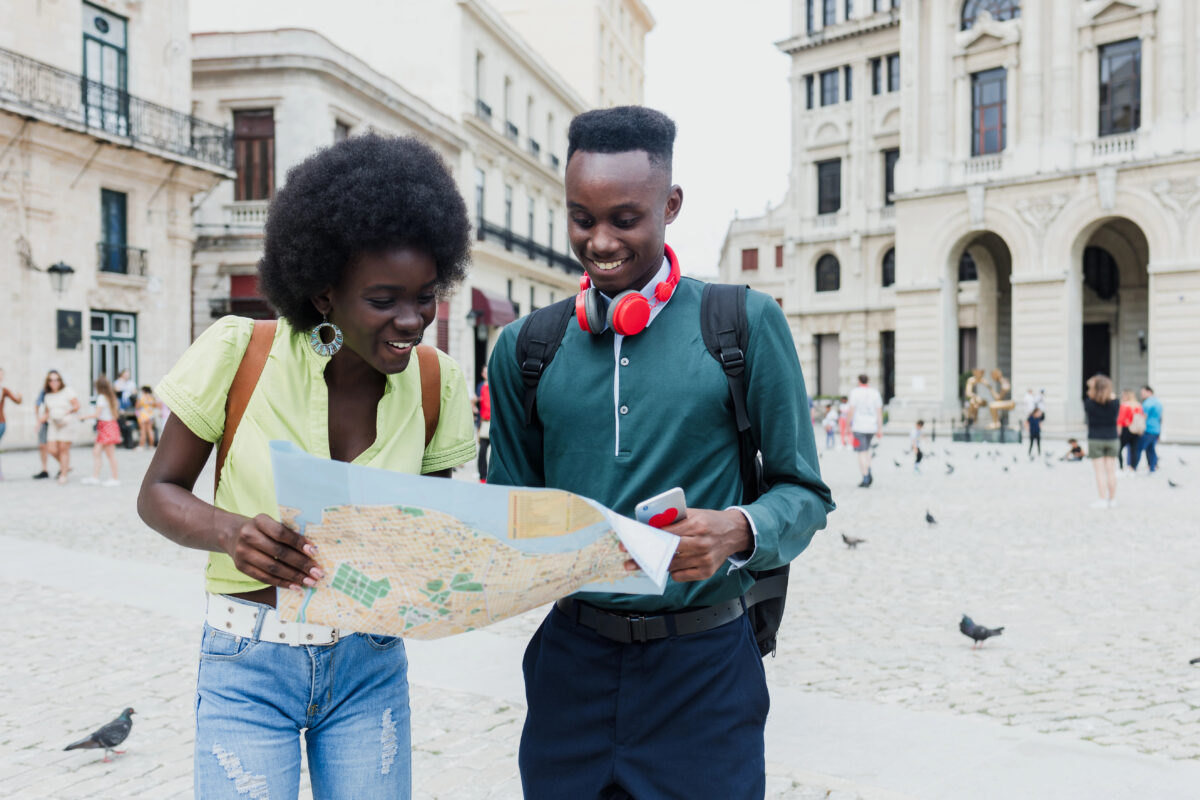
The Bahamas: Caribbean Vibes Without the Caribbean Sea
The Bahamas sit in the Atlantic Ocean about 50 miles east of Florida, close enough that many Eastern Caribbean cruises include Nassau or a Bahamian private island as a port of call. In fact, the overlap between Bahamas and Caribbean itineraries is so common that cruise lines often market them interchangeably. But the Bahamas also anchors its own category of short sailings—perfect for quick getaways or first-time cruisers testing the waters.
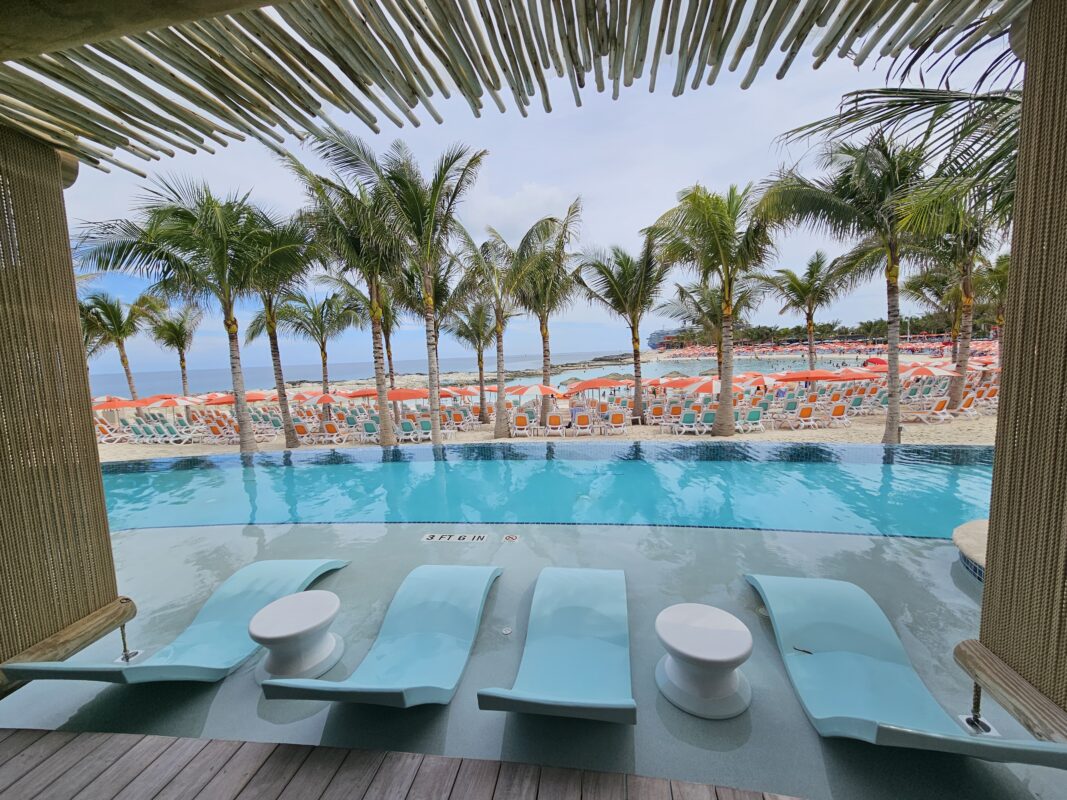
Geographic Clarification and Why It Matters
Despite feeling Caribbean in every way—turquoise water, white sand beaches, palm trees swaying over beach bars—the Bahamas are geographically separate. They’re an archipelago of more than 700 islands stretching across the Atlantic, starting just east of Florida and extending southeast toward the Caribbean. This proximity makes them incredibly accessible for short cruises, and their calm waters and steady sunshine mirror the Caribbean’s appeal.
The overlap I mentioned earlier matters for planning purposes. If you’ve already sailed an Eastern Caribbean cruise that stopped in Nassau or CocoCay, you’ve technically visited the Bahamas. But if you only experienced them as one port among several, a dedicated Bahamas cruise offers a different pace—more beach time, less sailing, and the option to explore multiple Bahamian islands in a single trip.

Top Ports and What to Expect
Nassau, New Providence: The Bahamas’ capital and busiest cruise port. On any given day, you might share Nassau with four or five other ships, which means crowds in the shopping districts and at popular beaches. That said, Nassau offers easy access to beautiful beaches, Atlantis Resort (the island’s marquee water park and aquarium), historic sites like Fort Fincastle, and vibrant local markets. If you’re looking for specific recommendations, I’ve written detailed guides about the best beaches in Nassau near the cruise port and the best things to do in Nassau for families.
Freeport, Grand Bahama: A quieter, more laid-back alternative to Nassau. Freeport feels less developed and more local, with beaches like Taino Beach and opportunities to visit Lucayan National Park. It’s a solid choice if you want a Bahamian port day without Nassau’s intensity.
Private Islands: Cruise lines operate their own private island experiences in the Bahamas, including Royal Caribbean’s Perfect Day at CocoCay, Carnival’s Half Moon Cay, and Disney’s Castaway Cay. These islands offer all-inclusive beach days with water sports, splash zones, buffet lunches, and bars—all within steps of your ship. They’re incredibly convenient for families with young kids who want a guaranteed beach day without the logistics of independent touring.
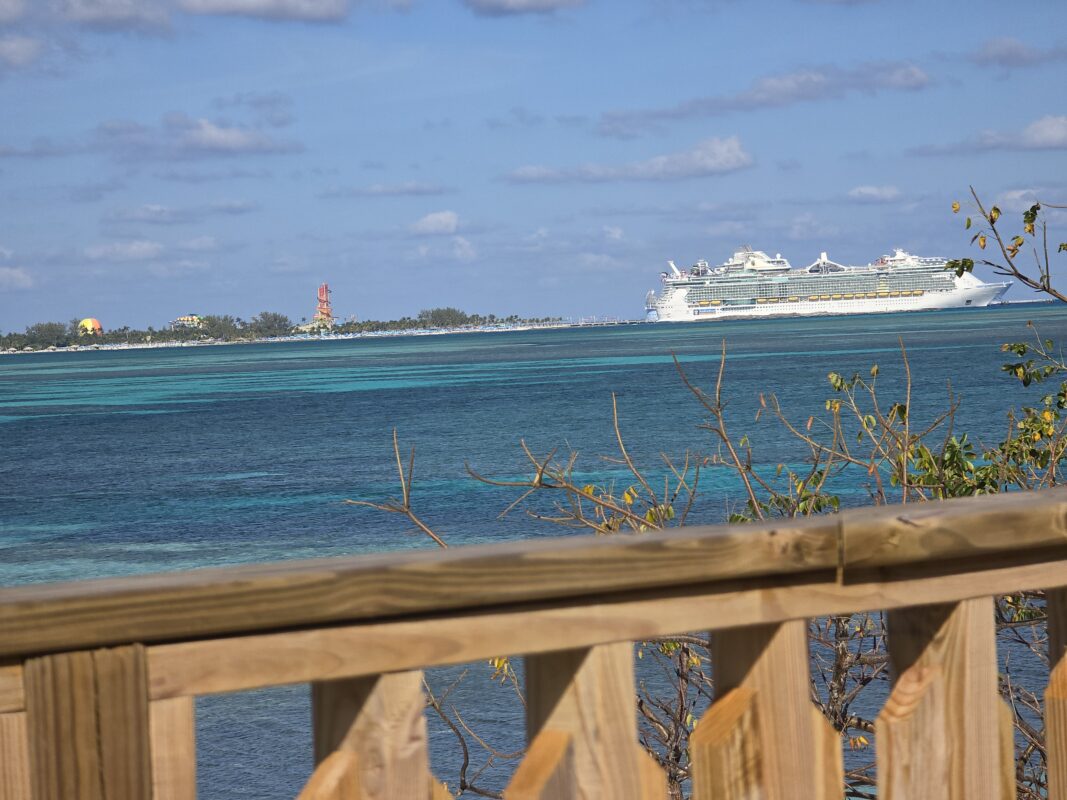
Cruise Lengths and Departure Ports
The Bahamas shines for short sailings. You’ll find plenty of 3- to 5-night cruises departing from Miami, Fort Lauderdale, Port Canaveral, and even Jacksonville. These short itineraries often visit Nassau, Freeport, and a private island, giving you three different Bahamian experiences in less than a week.
The Bahamas also appears frequently on 7-night Eastern Caribbean sailings as either the first or last port of call. In those cases, you’re getting a hybrid experience—traditional Caribbean islands like St. Thomas or St. Maarten combined with a Bahamian stop.

What to Expect: Activities and Excursions
Bahamas cruises prioritize beach time and water activities. Nassau offers everything from snorkeling and dolphin encounters to shopping and resort day passes. Atlantis, the island’s massive resort complex, anchors many shore excursions with its water park, aquarium, and marine habitat.
At private islands, the focus shifts to pure relaxation—beach chairs, water sports, and kid-friendly splash zones. You won’t find cultural tours or historic sites, but you also won’t find the stress of navigating a new port. Everything is designed for maximum ease.
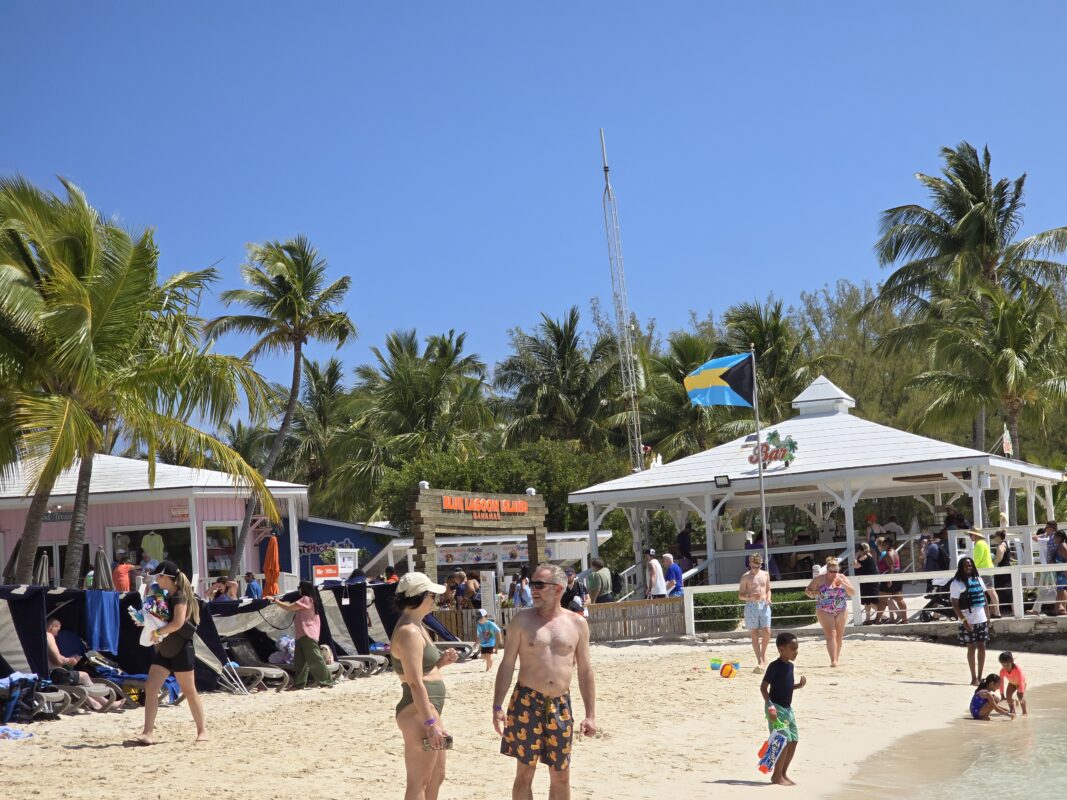
For families with young kids, this simplicity is a huge advantage. You’re off the ship, on the beach, and back aboard without worrying about logistics, language barriers, or long travel times.
Best For
Short getaways: Perfect for long weekends or quick escapes without using much vacation time.
First-time cruisers: Easy ports, short sailing distances, and familiar proximity to the U.S. make Bahamas cruises low-stress introductions to cruising.
Families wanting maximum beach time: With short distances between islands and port days that prioritize beaches and water activities, the Bahamas delivers beach-focused vacations without much sailing.
East Coast residents: Convenient Florida departure ports make driving to the ship feasible for many families.
 Swimming with the famous Exuma pigs in crystal-clear Bahamian water. (Courtesy of E. Warren)
Swimming with the famous Exuma pigs in crystal-clear Bahamian water. (Courtesy of E. Warren) Meeting the island’s playful piglets on a Bahamas beach excursion. (Courtesy of E. Warren)
Meeting the island’s playful piglets on a Bahamas beach excursion. (Courtesy of E. Warren)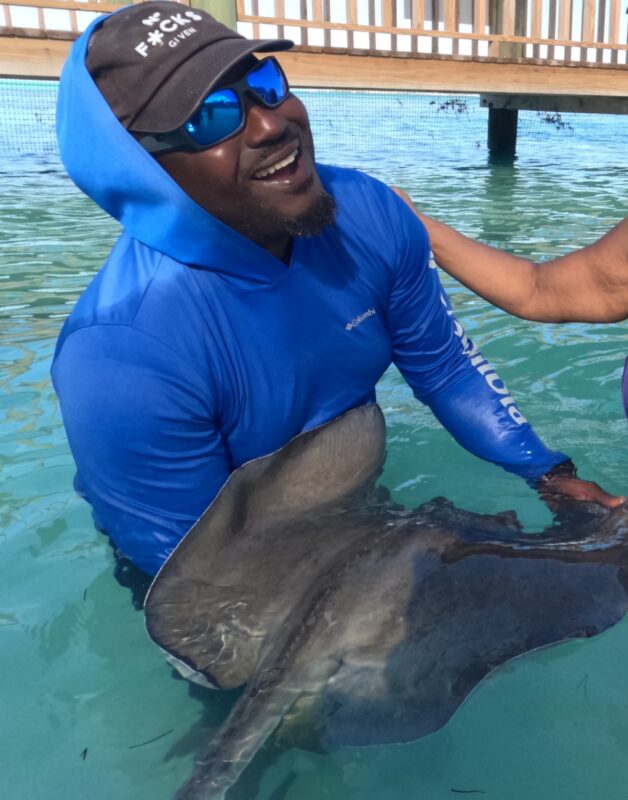 Gentle stingray encounters are a highlight for animal lovers in the Bahamas. (Courtesy of E. Warren)
Gentle stingray encounters are a highlight for animal lovers in the Bahamas. (Courtesy of E. Warren)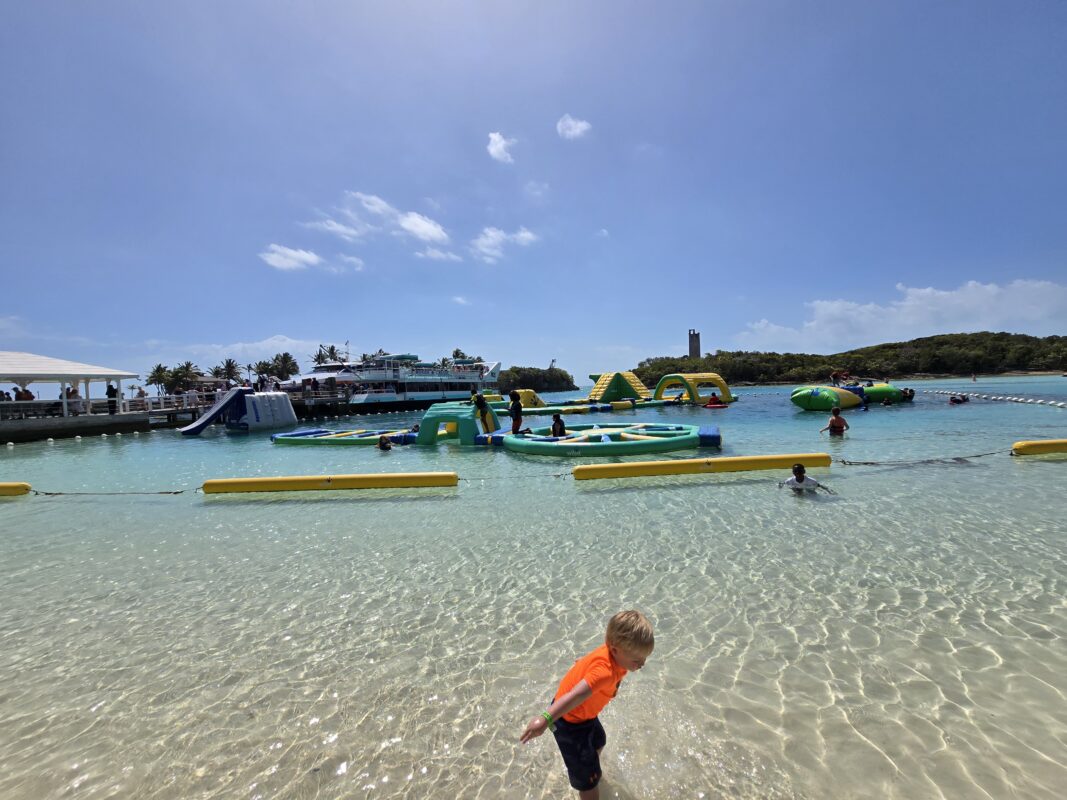 Family fun at the Blue Lagoon Island water park near Nassau. (Credit: E. Warren)
Family fun at the Blue Lagoon Island water park near Nassau. (Credit: E. Warren)
Trade-offs to Consider
Nassau crowds: On peak days, Nassau can feel overwhelming. Multiple ships in port mean crowded shopping districts and busy beaches. If you prefer quieter experiences, consider Freeport or private island stops instead.
Limited cultural variety: The Bahamas don’t offer the cultural diversity you’d find sailing between, say, Aruba, Curaçao, and St. Lucia. If you’re looking for distinct cultural experiences at each port, Bermuda or the Mexican Riviera might fit better.
Commercial feel: Especially at private islands, the experience can feel more curated than authentic. That’s not necessarily bad—it’s convenient and family-friendly—but it won’t satisfy travelers seeking local culture and off-the-beaten-path exploration.
Spring Break Consideration
If you’re weighing Bahamas versus traditional Caribbean for spring break, I’ve written a detailed comparison that breaks down the pros and cons of each. The short version: Bahamas cruises work well if you’re short on time or want to minimize sailing days, but Caribbean itineraries offer more variety if you have a full week.
Warm Weather Cruises to Bermuda: Pink Sand Beaches Meet British Elegance
Bermuda sits about 700 miles off the coast of the Carolinas, floating alone in the Atlantic Ocean. Unlike the Bahamas, which often blends into Caribbean itineraries, Bermuda cruises stand apart. The island’s subtropical climate, British heritage, pink sand beaches, and coral reefs create an experience that feels more refined and distinct than typical Caribbean ports.
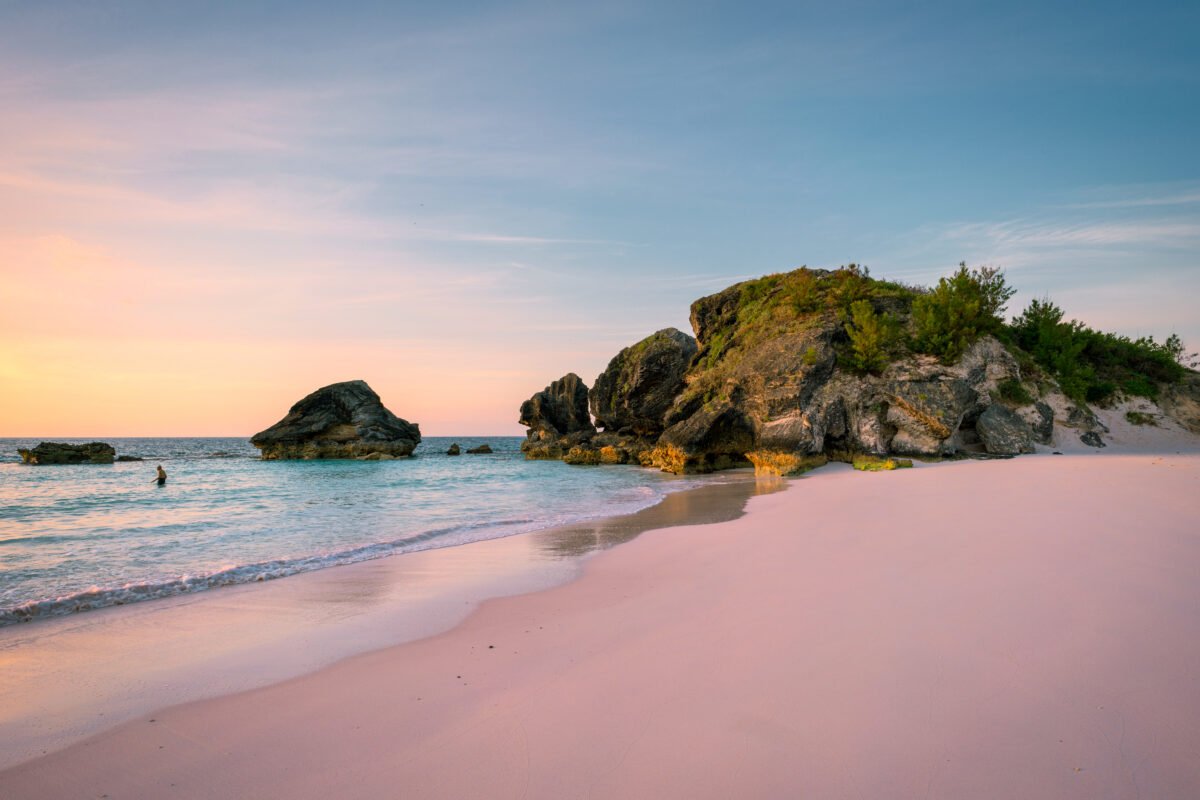
Geographic Setting and What Makes It Different
Bermuda is subtropical, not tropical. That distinction matters, especially if you’re sailing to Bermuda in spring or fall. Water temperatures run cooler than the Caribbean, and air temperatures can dip into the 60s or low 70s during shoulder season. But in exchange, you get steady trade winds, less humidity, and scenery that feels more manicured and European than island-casual.
The island itself is small—only about 21 square miles—with a strong British colonial influence. You’ll see pastel-colored buildings, narrow winding roads, and a pace of life that feels slower and more refined than the bustling cruise ports of the Caribbean. Bermuda’s charm lies in that blend: British politeness meets island warmth, with beaches that deliver postcard-perfect backdrops.
Top Ports and What to Expect
Most Bermuda cruises dock at King’s Wharf in the Royal Naval Dockyard, a historic British naval base turned cruise port. The dockyard itself offers shopping, restaurants, museums, and easy access to nearby beaches. Unlike many Caribbean ports where you’re in and out in a day, Bermuda cruises often spend two or even three nights docked, giving you plenty of time to explore without feeling rushed.
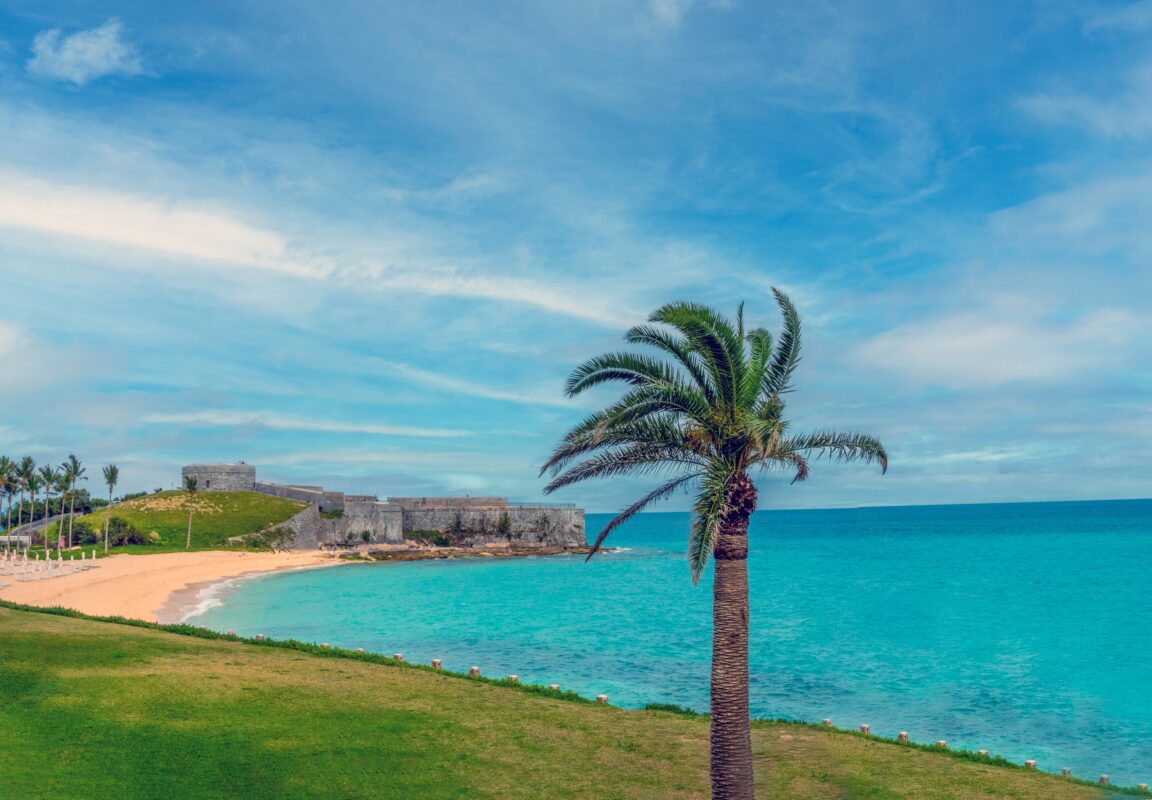
From King’s Wharf, you can reach the island’s top beaches, historic sites in St. George’s and Hamilton, and scenic coastal trails. Taxis and ferries make independent exploration easy, and the island’s small size means you’re never more than a short ride from your next stop.
If you want specific beach recommendations, I’ve put together a full guide to Bermuda beaches near the cruise port at King’s Wharf, covering everything from family-friendly Snorkel Park Beach to the more secluded Somerset Long Bay.
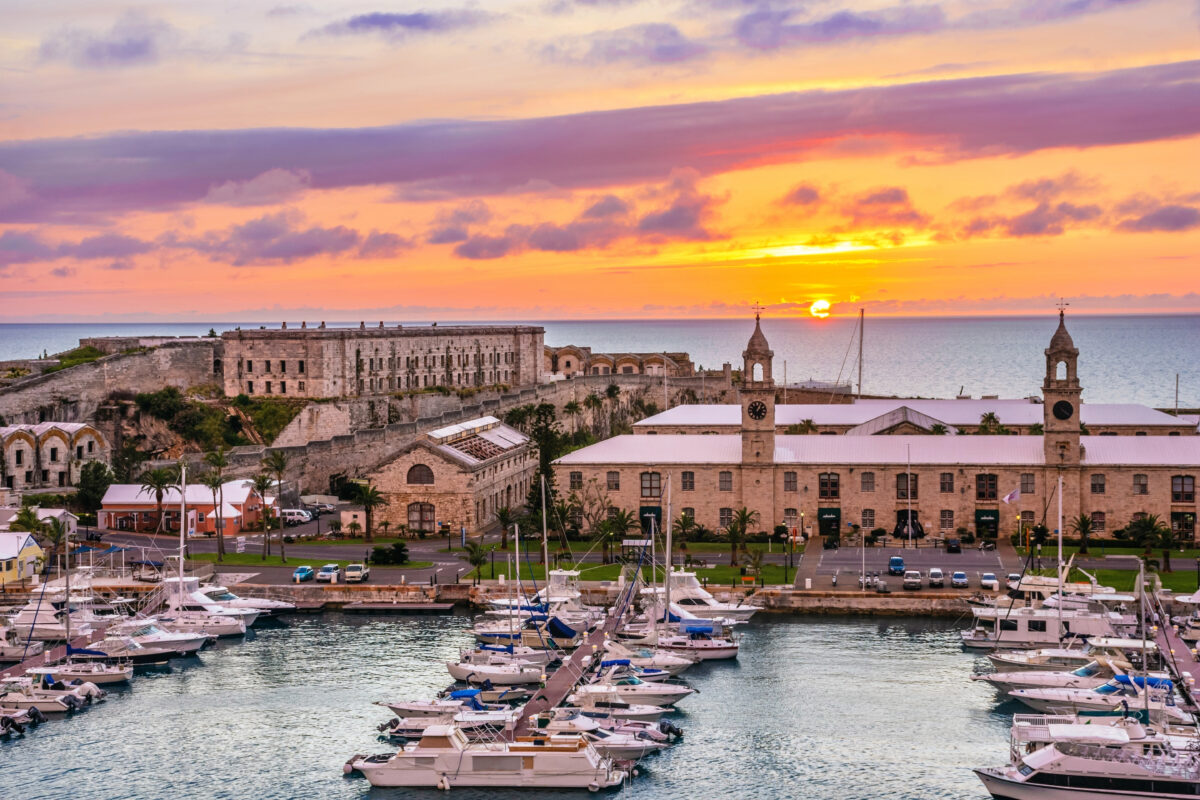
Cruise Lengths and Departure Ports
Bermuda cruises typically run 7 nights and depart from northeastern U.S. ports—New York, Cape Liberty (New Jersey), Baltimore, Boston, and occasionally Charleston. These departures make Bermuda especially convenient for East Coast residents who can drive to the port and skip the expense and hassle of flights to Florida.
The 7-night itinerary usually includes two or three full days docked in Bermuda, with the remaining days spent sailing each direction. That means more sea days than you’d typically find on a Caribbean cruise, but the trade-off is extended time to explore a single, beautiful island without the potential exhaustion of port-hopping.
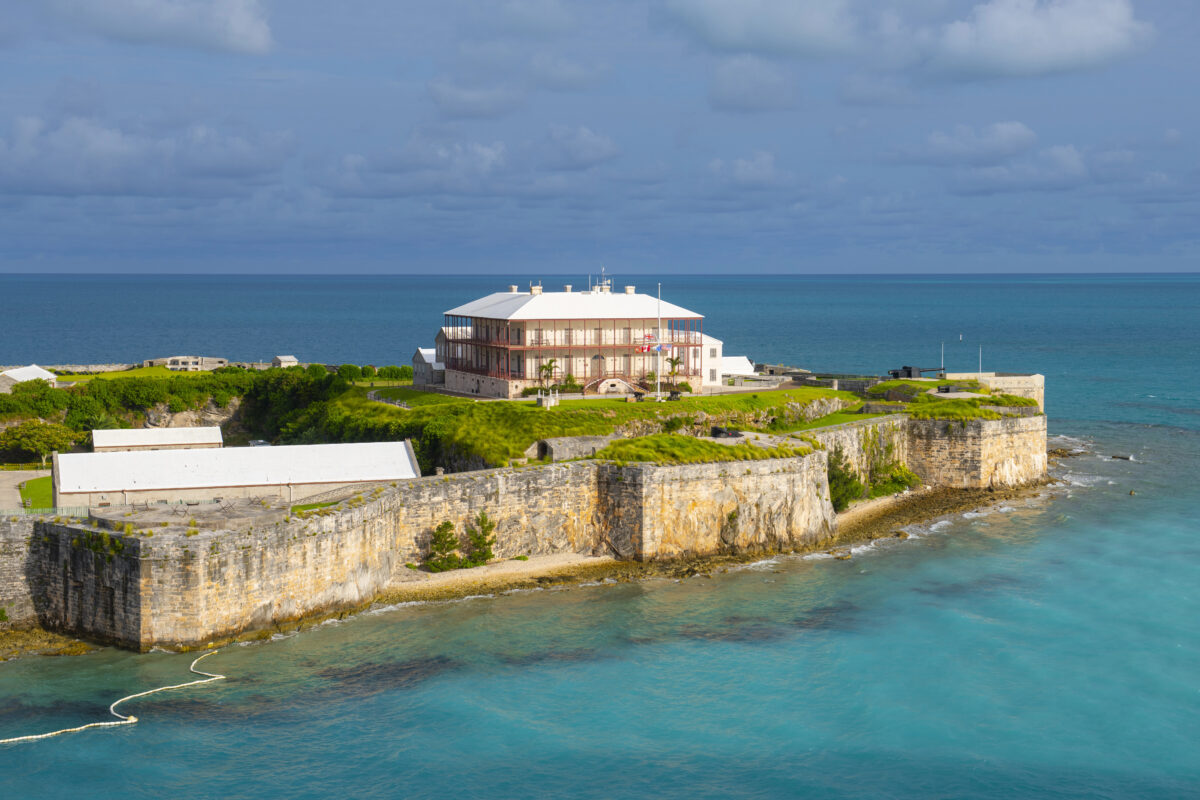
What to Expect: Activities and Excursions
Bermuda’s appeal lies in its blend of natural beauty and historic charm. Popular activities include:
Beach days: Bermuda’s beaches are genuinely special. The island’s pink sand (created by crushed coral and shells) and clear turquoise water make for stunning photos. Horseshoe Bay is the most famous, but smaller beaches like Warwick Long Bay and Somerset Long Bay offer quieter alternatives.
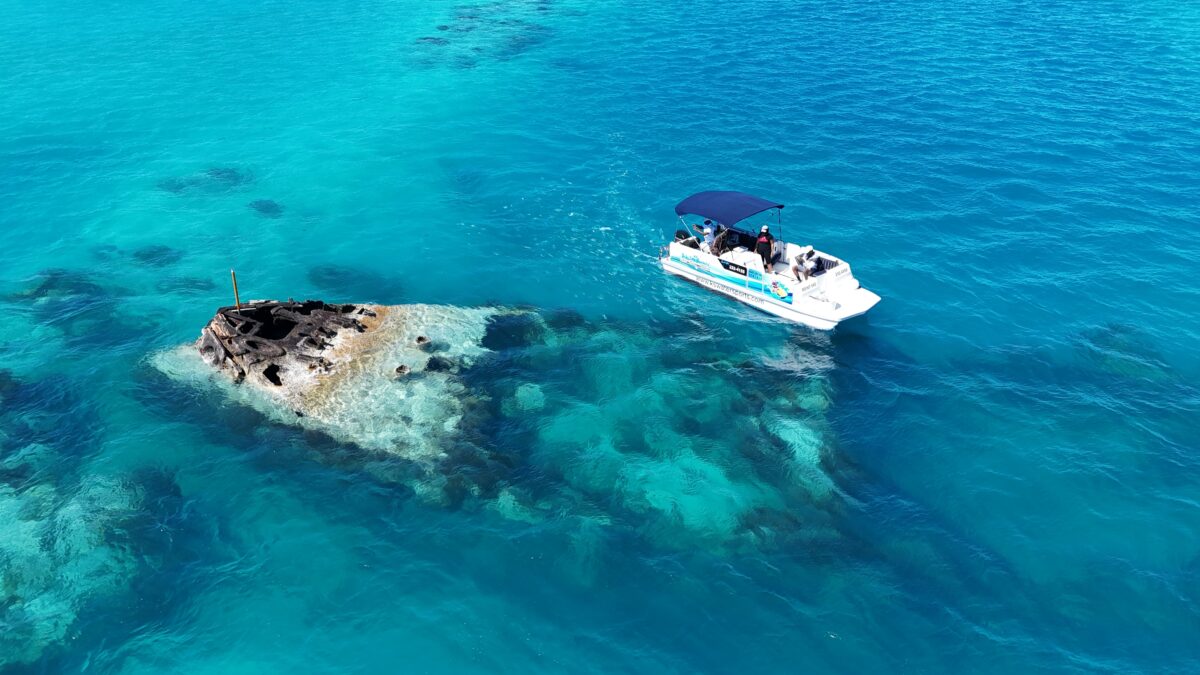
Snorkeling shipwrecks: Bermuda is surrounded by a ring of coral reefs that have claimed hundreds of ships over the centuries. Today, those wrecks make for incredible snorkeling sites. Many are accessible from shore or via short boat rides, and the clear water provides excellent visibility even for beginners.
Historic sites: Explore the cobblestone streets of St. George’s, a UNESCO World Heritage Site, or visit the historic forts that dot the island. The Royal Naval Dockyard itself offers museums covering Bermuda’s maritime and military history.
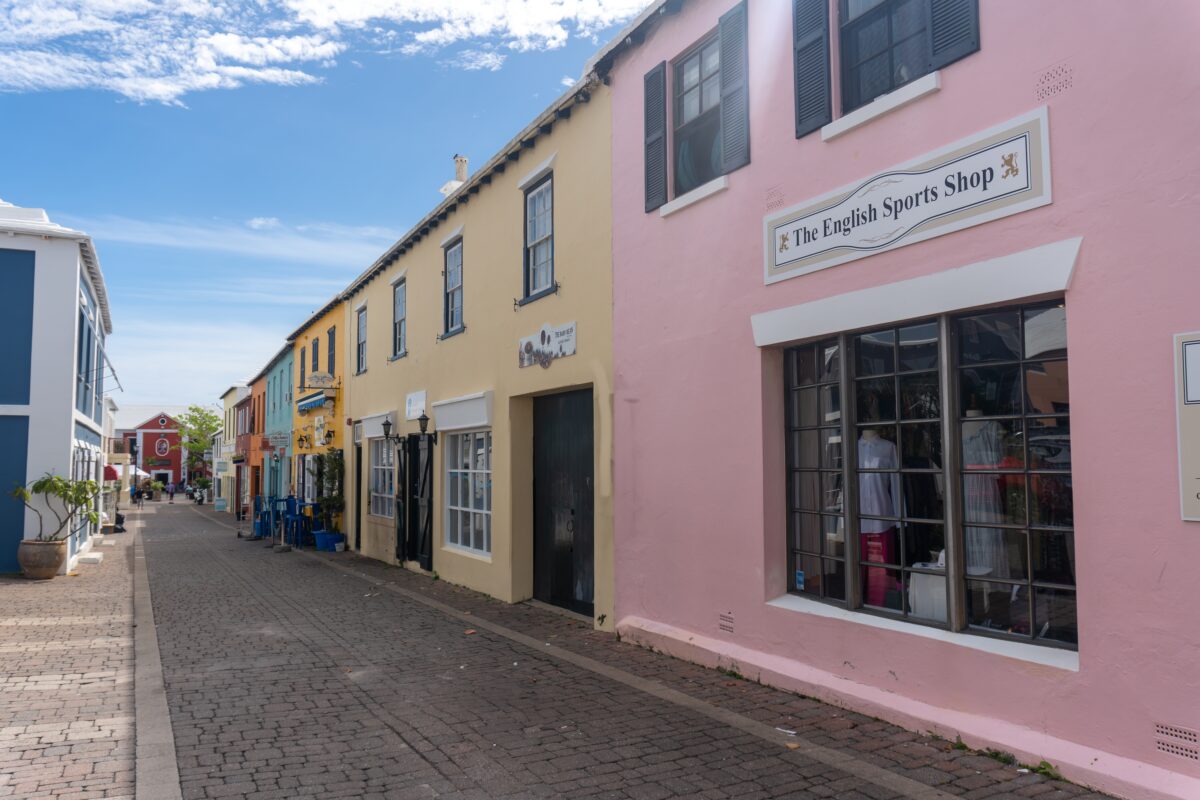
Railway Trail: This scenic coastal walking and biking path follows the route of Bermuda’s old railway line, offering beautiful ocean views and a peaceful way to see parts of the island that cruise passengers often miss.
Glass-bottom boat tours: Perfect for families with kids who aren’t confident snorkelers but still want to see Bermuda’s underwater world.
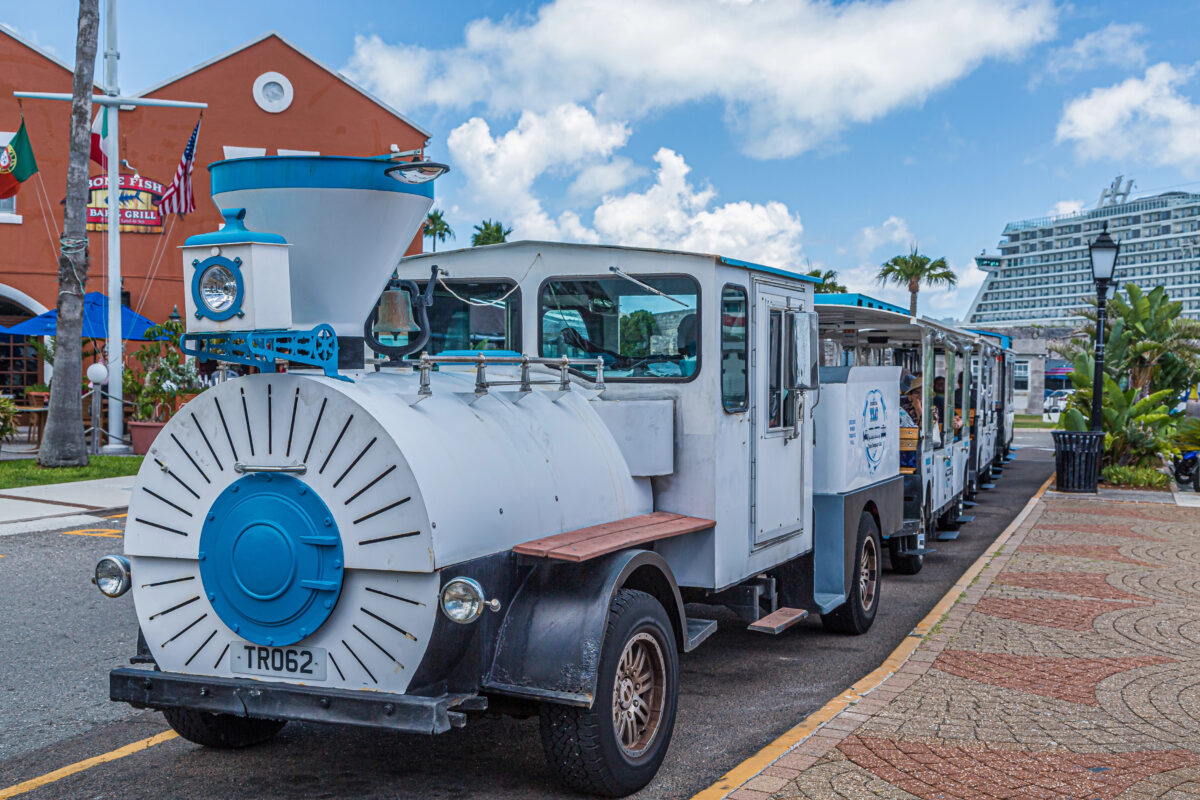
For a broader overview of shore options, I’ve written a detailed post about what to do in Bermuda on a cruise that covers everything from beaches to cultural sites.
Best For
Families wanting something different from typical Caribbean: If you’ve done multiple Caribbean cruises and want a change of pace, Bermuda delivers a distinct experience—different scenery, different culture, and a more refined atmosphere.
Northeast residents: Convenient departure ports make Bermuda accessible without flights, which can save hundreds of dollars for families traveling with kids.
Those who’ve “done” Caribbean: Repeat cruisers often find Bermuda offers fresh scenery and new experiences without requiring a dramatically different type of cruise.
Travelers seeking fewer crowds and British charm: Bermuda feels less commercialized than many Caribbean ports. The island’s small size and extended port stays allow for a slower, more relaxed pace.
Best Time to Visit
Bermuda’s cruise season runs from May through October—shorter than the Caribbean’s year-round availability. Water and air temperatures peak in July and August, but shoulder season months like May and early October offer pleasant weather with fewer crowds. If you want details on timing your trip, I’ve written a full guide covering the best time to cruise to Bermuda for beaches, festivals, and more.
Trade-offs to Consider
More expensive than the Caribbean: Bermuda typically costs more than comparable Caribbean cruises. Hotels, taxis, and shore excursions all run higher than what you’d pay in, say, Nassau or Cozumel.
Cooler than Caribbean: Especially in spring and fall, Bermuda’s water and air temperatures sit below typical Caribbean levels. If your kids are sensitive to cooler water, plan accordingly.
Longer sailing distances mean more sea days: Because Bermuda sits 700 miles offshore, you’ll spend more time sailing than you would on Caribbean itineraries. That’s fine if you enjoy sea days, but it means less port variety than a typical 7-night Caribbean cruise.
Mexican Riviera: Pacific Coast Alternative to Caribbean Mexico
If you live on the West Coast or simply want a change from Caribbean ports, the Mexican Riviera offers a compelling alternative. These cruises sail down Mexico’s Pacific Coast, visiting ports that blend beach resorts, authentic Mexican culture, and dramatic desert-meets-ocean landscapes. It’s a completely different feel from Caribbean Mexico’s lush jungles and turquoise waters—but it delivers the same warm-weather vacation experience with far more convenient departure ports for West Coast residents.
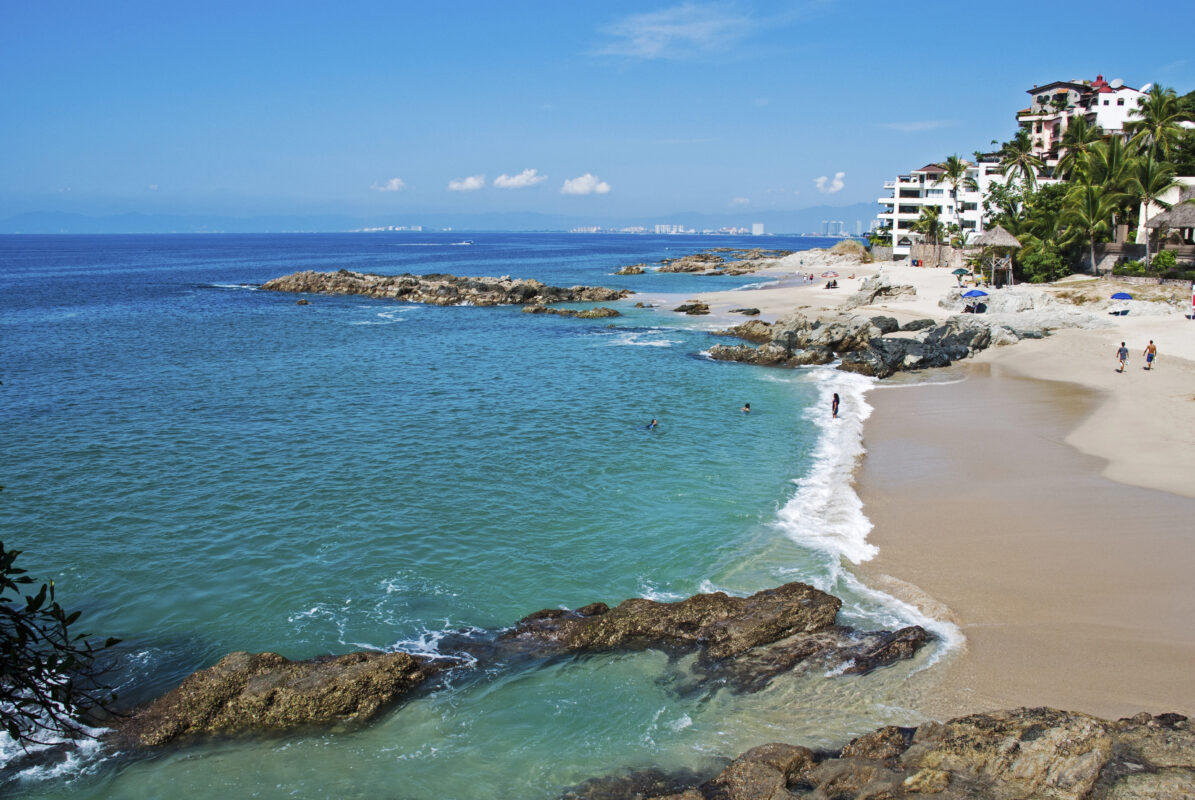
Geographic Distinction: Pacific vs Caribbean Mexico
Mexico has two distinct cruise regions: Caribbean Mexico (Cozumel, Costa Maya, Playa del Carmen) and Pacific Coast Mexico (the Mexican Riviera). Caribbean Mexico lies along the Yucatán Peninsula’s eastern shore, facing the warm, calm Caribbean Sea. Pacific Coast Mexico stretches from Baja California down to Puerto Vallarta and beyond, facing the cooler, rougher Pacific Ocean.
That distinction changes everything. Pacific waters run cooler and choppier, with waves better suited to surfing than snorkeling. The landscapes shift from Caribbean jungles to desert mountains tumbling into the sea. And the ports feel more authentically Mexican, with fewer all-inclusive resort complexes and more traditional towns built around fishing and local commerce.
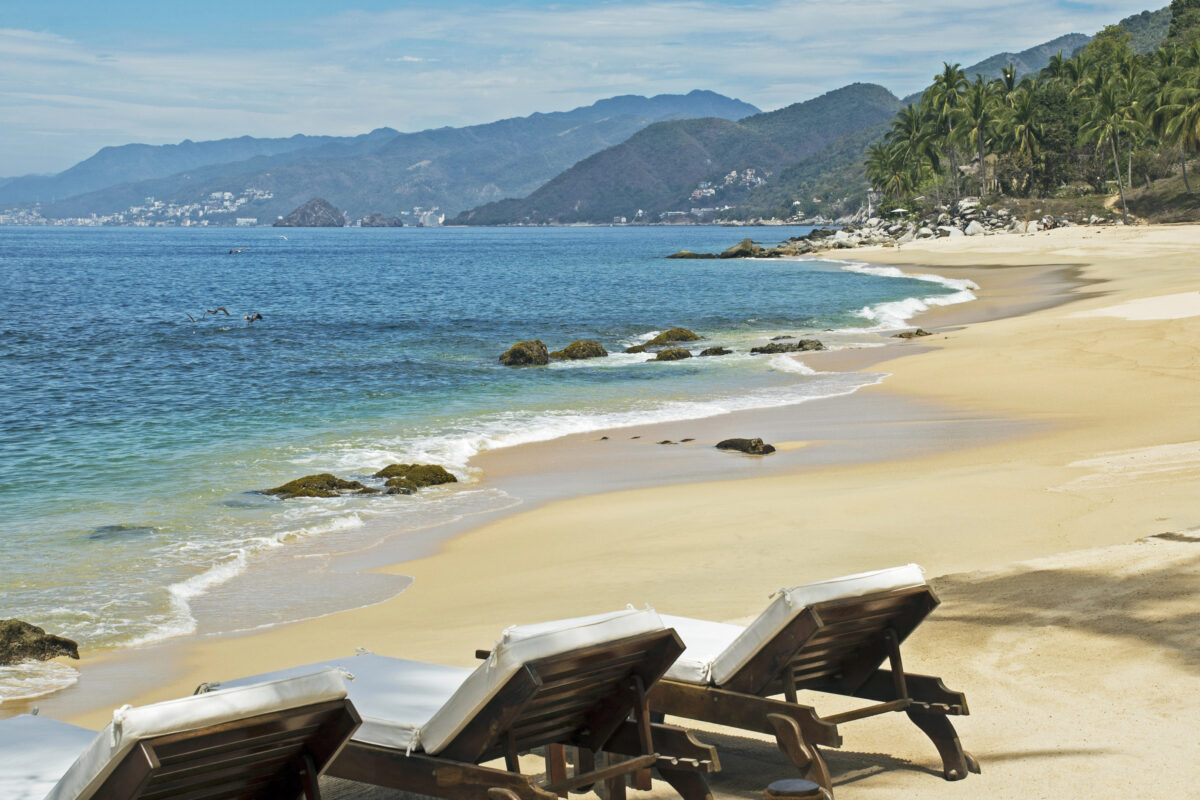
Top Ports and What to Expect
Cabo San Lucas: The crown jewel of the Mexican Riviera. Cabo combines dramatic rock formations (including the famous El Arco arch) with beach clubs, water sports, and a lively marina district. Families can take glass-bottom boat tours, visit nearby beaches, or explore the desert interior on ATV tours. Cabo’s port requires tendering, which adds time but also contributes to the town’s less-commercialized feel compared to mega-ports like Cozumel.
Puerto Vallarta: A charming coastal city with a historic downtown, beautiful beaches, and lush jungle just inland. Puerto Vallarta offers zip-lining, river tours, beach clubs, and excellent local restaurants. The Malecón (waterfront boardwalk) makes for easy independent exploration, and the surrounding Sierra Madre mountains provide dramatic backdrops.
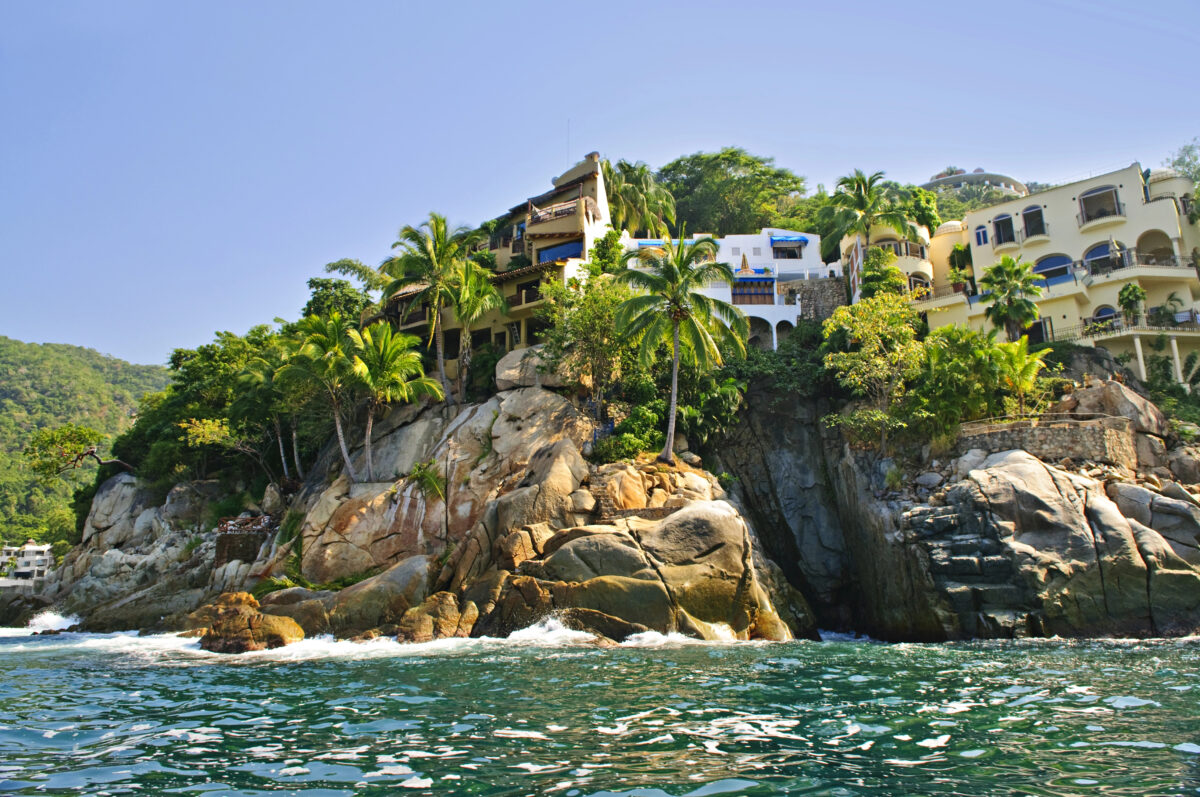
Mazatlan: Often called the “Pearl of the Pacific,” Mazatlan blends old-world charm with modern beach resorts. The historic district features colonial architecture and traditional markets, while the Golden Zone offers wide sandy beaches and water sports. It’s less touristy than Cabo or Puerto Vallarta, which means more authentic local experiences.
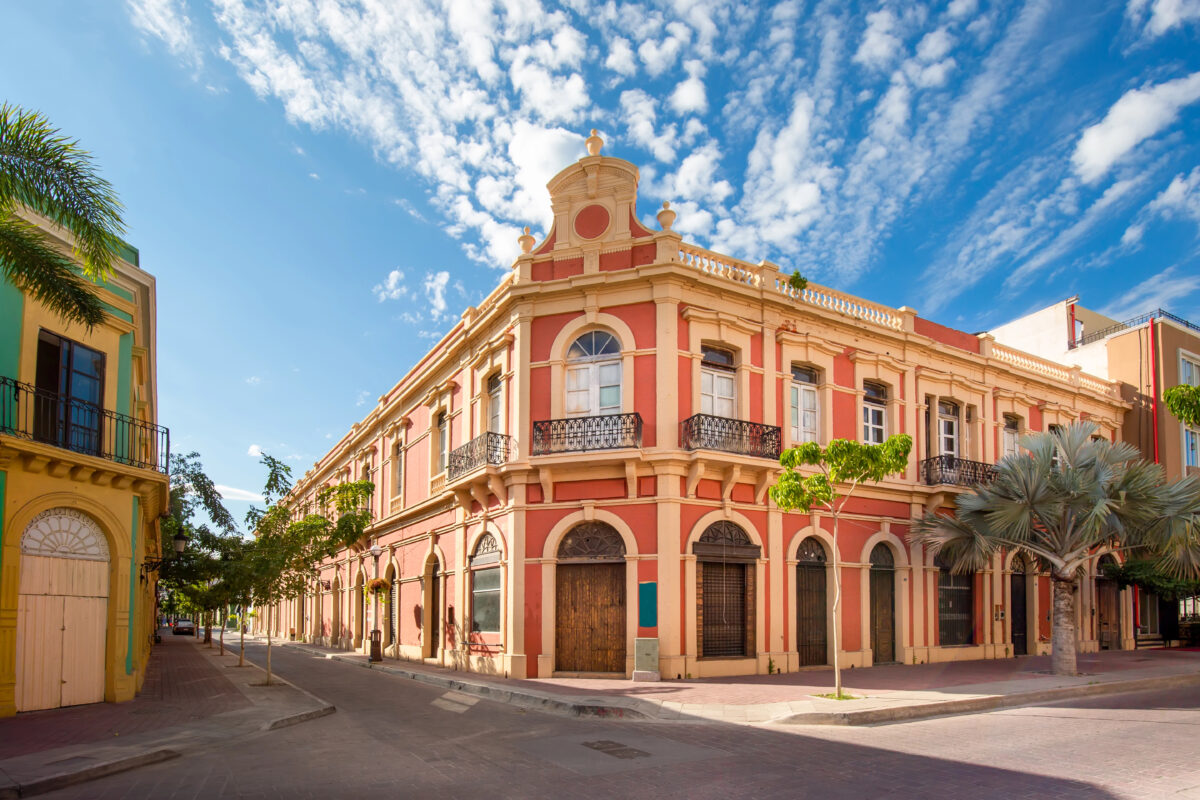
Ensenada: A smaller, more laid-back port about 90 minutes south of the U.S.-Mexico border. Ensenada serves as the gateway to Baja California’s wine country and offers beach time, shopping, and easy access to La Bufadora (a natural marine blowhole). For families with young kids, Ensenada’s compact downtown and nearby beaches make for stress-free port days. We have a detailed guide covering the best things to do in Ensenada port if you’re looking for specific recommendations.

Cruise Lengths and Departure Ports
Most Mexican Riviera cruises are 7 nights and depart from Southern California ports — Los Angeles (San Pedro), Long Beach, or San Diego — with occasional sailings from San Francisco. Some cruise lines also offer shorter 3–5-night Baja California getaways that visit Ensenada alone or Ensenada plus Cabo San Lucas.
A typical 7-night itinerary features three or four Mexican ports, with the remaining days spent at sea. Because the sailing distances along Mexico’s Pacific coast are longer than in the Caribbean, you can expect more sea days — which also means more time to enjoy the ship’s amenities and ocean views.
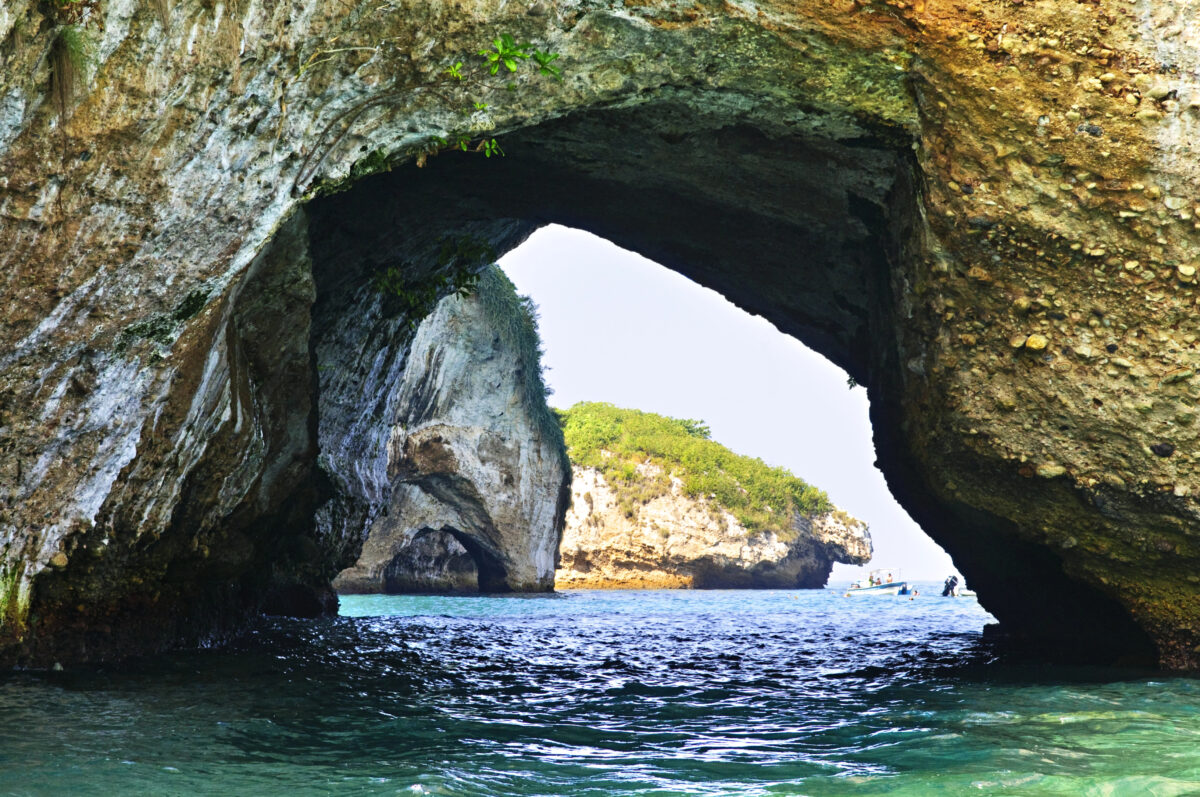
What to Expect: Activities and Excursions
Mexican Riviera cruises offer a different activity mix than Caribbean sailings:
Beach clubs: Many ports offer all-inclusive beach club experiences similar to what you’d find in the Caribbean, but with cooler Pacific water and rockier coastlines.
Whale watching: Winter and early spring (December through March) bring gray whales and humpback whales to Baja California’s waters. Whale-watching excursions are a major draw during this season.

Desert and mountain landscapes: Unlike the Caribbean’s flat, lush islands, the Mexican Riviera features dramatic mountain-meets-ocean scenery. ATV tours, zip-lining through jungle canopies, and desert Jeep tours showcase this unique geography.
Authentic Mexican culture: Puerto Vallarta’s historic downtown, Mazatlan’s traditional markets, and local cuisine throughout the region offer more authentic cultural experiences than many heavily touristed Caribbean ports.

Water sports: While Pacific waters are cooler and rougher than the Caribbean, they’re excellent for surfing, boogie boarding, and sport fishing. Snorkeling is available but typically requires boat trips to calmer bays.
Best Time to Visit
Looking for the best time to cruise the Mexican Riviera? The Mexican Riviera shines in winter and early spring. December through March brings mild temperatures, whale migrations, and fewer crowds than summer.
Summer and fall offer lower prices but hotter temperatures, higher humidity, and the possibility of Pacific hurricanes (though they’re less frequent than Atlantic hurricanes). Shoulder season months like November and April provide a good balance of pleasant weather and reasonable pricing.
Best For
West Coast residents wanting to avoid airfare: If you live in California or the Pacific Northwest, Mexican Riviera cruises eliminate the expense and hassle of flying to Florida for Caribbean sailings.
Families interested in Mexican culture: The Mexican Riviera offers more authentic cultural experiences than heavily touristed Caribbean Mexico ports.
Whale watching enthusiasts: Winter and early spring sailings offer incredible whale-watching opportunities that you simply won’t find in the Caribbean.
Those seeking different scenery from Caribbean: Desert mountains meeting the Pacific Ocean create a dramatically different visual experience than Caribbean islands and jungles.
Trade-offs to Consider
Cooler Pacific water (not as swimmable as Caribbean): Pacific waters along Mexico’s coast are generally 8–12°F cooler than the Caribbean, especially in winter, and tend to have stronger waves. If your kids expect calm, bathtub-warm water, Caribbean Mexico might be a better fit.
Can be rougher seas: The Pacific is usually calm, but winter swells and offshore winds can create rougher seas than in the more sheltered Caribbean. If your family is prone to seasickness, this can be a consideration.
Longer sailing distances: Mexican Riviera itineraries cover more miles than compact Caribbean routes, which means more sea days and fewer port stops on a 7-night cruise.
Some ports require tenders: Cabo San Lucas—and occasionally smaller ports like Manzanillo or Loreto—require tender boats to reach shore. This adds time and can be challenging for families with very young kids or those with mobility issues.
Quick Mention: Panama Canal & Central America Pacific
While the Bahamas, Bermuda, and Mexican Riviera form the core warm-weather alternatives to the Caribbean, one more option deserves mention: Panama Canal cruises that explore Central America’s Pacific Coast.
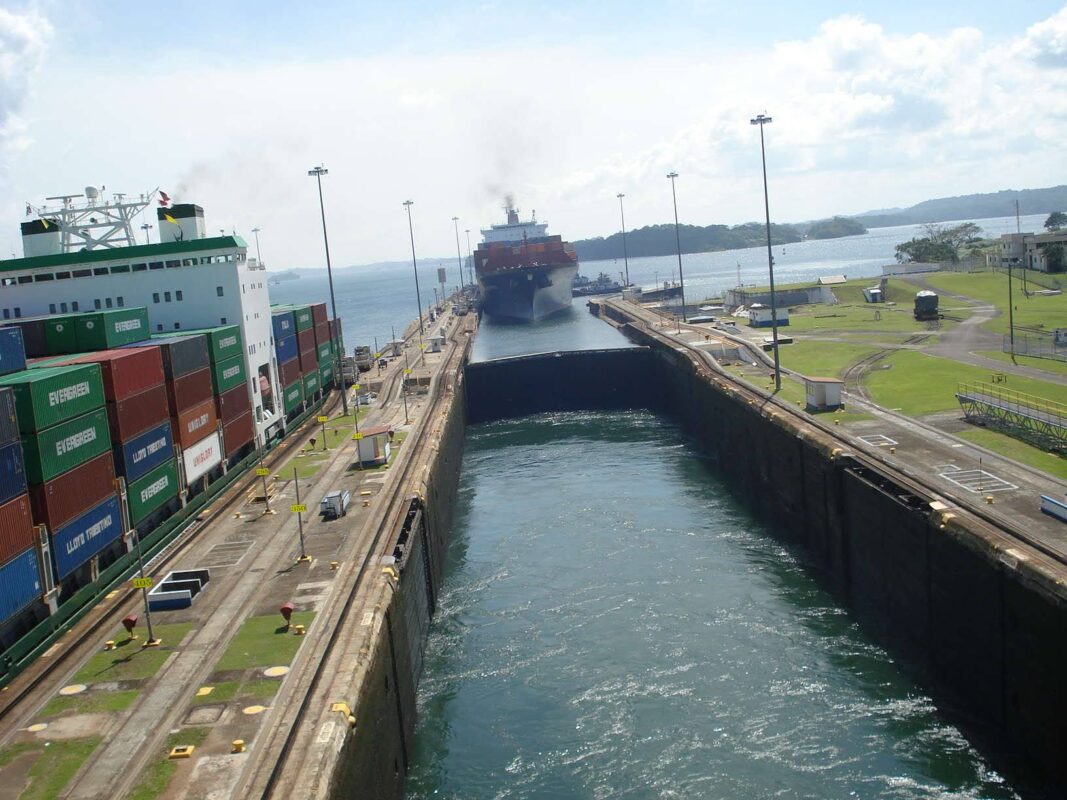
What Makes Panama Canal Cruises Unique
Panama Canal cruises are fundamentally different from the island-hopping style of Caribbean itineraries. Instead of focusing primarily on beaches and beach clubs, these longer sailings (typically 10-14 nights) center on the engineering marvel of the Panama Canal itself—a full-day transit through locks that raise ships 85 feet above sea level, over the Continental Divide, and back down to the opposite ocean.
The canal transit is a bucket-list experience, especially for families with older kids who can appreciate the engineering and history. (Although we sailed with a three-year-old, and had a marvelous time!) But the itinerary doesn’t stop there. Most Panama Canal cruises include a mix of Pacific Coast ports in Mexico, Central America, and occasionally Colombia, offering tropical beaches, rainforests, and cultural experiences that rival anything in the Caribbean.
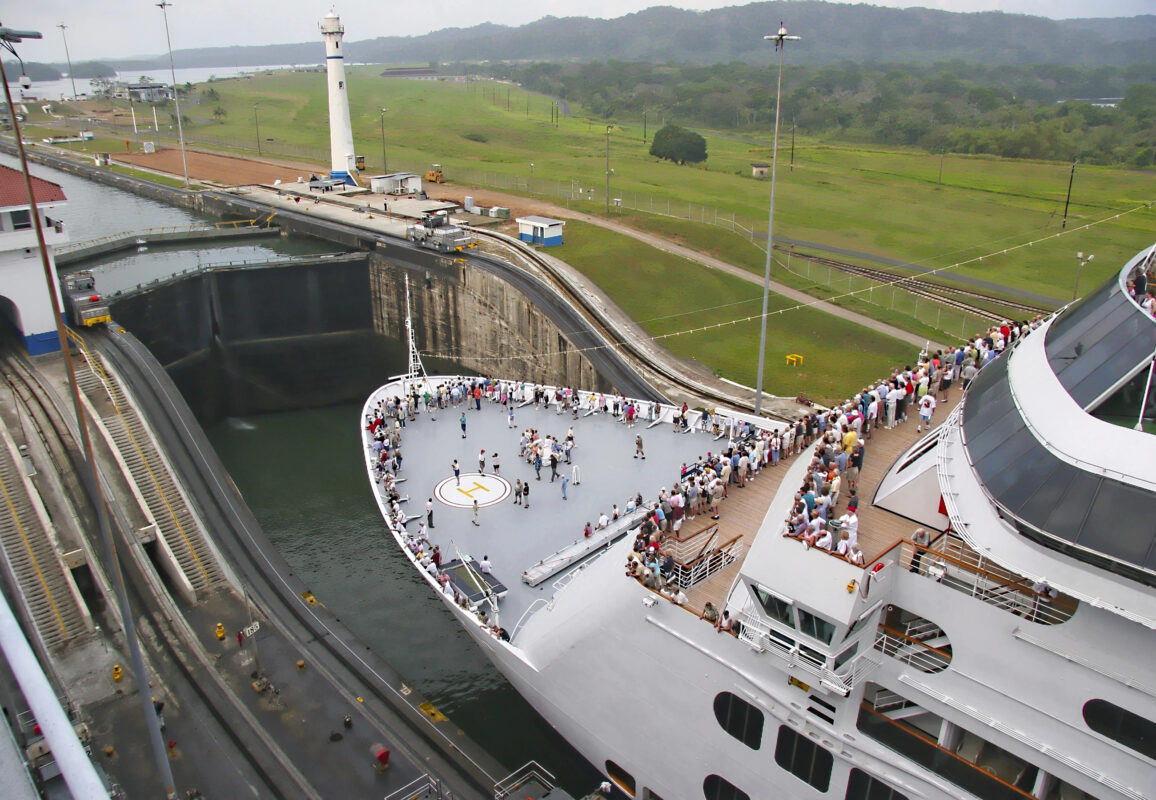
Typical Ports and Experiences
Panama Canal cruises often stop at:
Puntarenas, Costa Rica: Gateway to rainforest adventures, wildlife encounters, and beautiful Pacific beaches.
Cartagena, Colombia: A historic colonial city with fortress walls, colorful architecture, and Caribbean-style beaches on the northern coast.
Panama City and Colón, Panama: Modern city with access to the canal, rainforests, and indigenous culture.
Mexican Riviera ports: Many Panama Canal itineraries include Cabo San Lucas, Puerto Vallarta, or Mazatlan, effectively combining two warm-weather regions in one longer cruise.

Best For
Bucket-list travelers: The Panama Canal itself is a once-in-a-lifetime experience, and the surrounding ports deliver tropical scenery and adventure on par with top Caribbean destinations.
Families with older kids: The canal transit fascinates kids old enough to appreciate engineering and history, and the longer itineraries allow for deeper exploration at each port. However, the typical cruise lengths—10 to 16 nights—and main sailing season (October through April) don’t align well with most school vacation schedules.
Those wanting to combine multiple regions: Panama Canal cruises often combine Mexican Riviera, Central American, and Southern Caribbean ports, offering maximum regional variety in one sailing.
Trade-offs
Longer cruises (10-14+ nights): Panama Canal sailings require more vacation time and typically cost more than 7-night Caribbean cruises.
More sea days: Expect several days at sea, especially on longer repositioning cruises that move ships between Alaska and the Caribbean.
Can be one-way itineraries: Some Panama Canal cruises are repositioning sailings, meaning you fly into one port and out of another. That adds logistical complexity but also allows you to see more destinations.
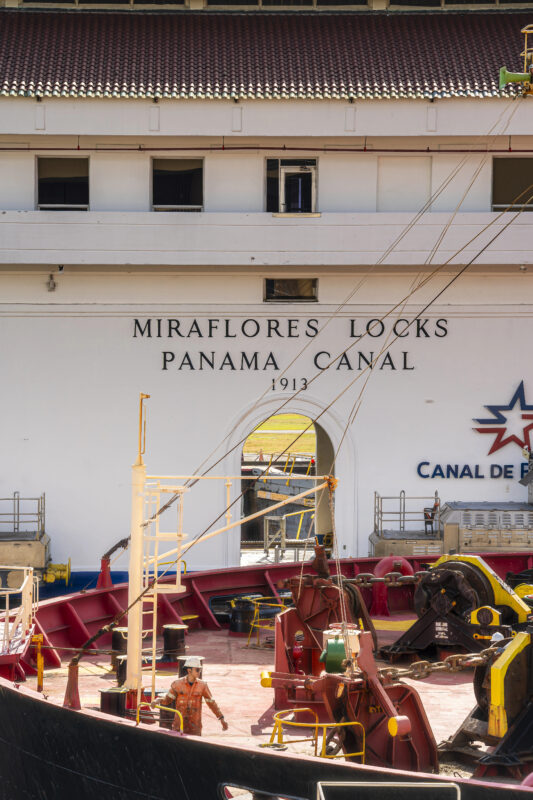
Warm-Weather Cruise Destinations at a Glance
Choosing between the Bahamas, Bermuda, the Mexican Riviera, and Panama Canal cruises comes down to matching your family’s priorities—time available, home port convenience, budget, and the type of experience you’re seeking. Use the comparison table below to see how these destinations stack up.
These warm-weather cruise regions offer the same sunshine and beaches as the Caribbean—each with its own character, seasonality, and ideal traveler profile.
| Feature | Bahamas | Bermuda | Mexican Riviera | Panama Canal |
|---|---|---|---|---|
| Location | Atlantic Ocean (north of Caribbean) | Atlantic Ocean (700 mi off Carolinas) | Pacific Coast of Mexico | Pacific & Atlantic via Central America |
| Typical Cruise Length | 3–5 nights (or part of 7-night Caribbean) | 7 nights | 7 nights | 10–14+ nights |
| Departure Ports | Florida (Miami, Ft. Lauderdale, Port Canaveral) | Northeast (NYC, Baltimore, Boston) | California (LA, San Diego, San Francisco) | Varies (often one-way) |
| Weather / Season | Year-round tropical | Subtropical; best April–October (summer high season) | Year-round; best November–April | Year-round; best December–April (dry season) |
| Water Temperature | Warm (similar to Caribbean) | Cooler than Caribbean | Moderate (Pacific; cooler than Caribbean, warmer in summer) | Warm Caribbean side, slightly cooler Pacific side |
| Crowds | High (especially Nassau) | Moderate | Moderate | Lower |
| Price Range | Budget-friendly to moderate | Premium | Moderate | Premium |
| Best For | Short getaways, first-timers, families with young kids | Repeat cruisers, history buffs, East Coast residents | West Coast residents, whale watching, authentic culture | Bucket-list travelers, families with older kids |
| Key Difference from Caribbean | Often overlaps; Atlantic location | Pink sand, British heritage, refined feel | Pacific Ocean, desert landscapes, cooler water | Engineering marvel, longer itinerary, multiple countries |
Closing Thoughts
The Caribbean doesn’t hold a monopoly on warm-weather cruising. The Bahamas, Bermuda, the Mexican Riviera, and Panama Canal routes all deliver tropical (or subtropical) experiences with their own distinct personalities..
No matter which destination you choose, remember these warm-weather alternatives deliver the same beautiful beaches and family-friendly experiences you’d find in the Caribbean—they just happen to be in different oceans.

Elaine Warren
Founder & Crew Chief
Elaine founded this website after publishing the book The Family Cruise Companion’s Guide to Cruising With Kids. (Second edition recently released!) She has sailed on 45 cruises (and counting). She loves helping families navigate their way to an adventure-filled, fun, and memorable vacation.

